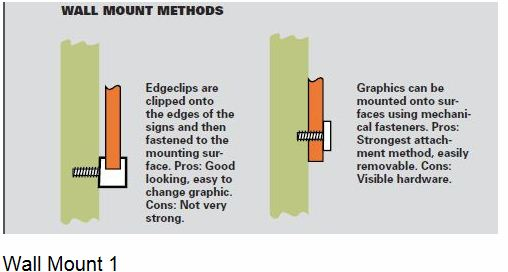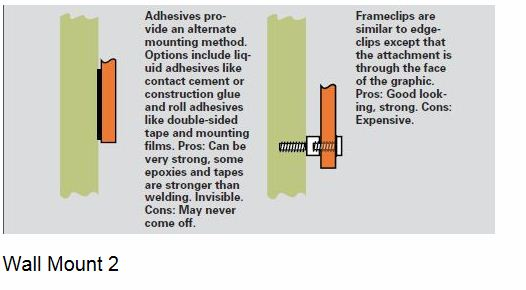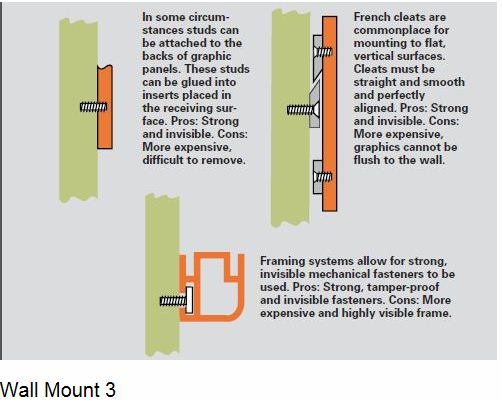Indoor Architectural Installation Methods for Wall Mount Signs
There are many ways to install an architectural signs. Here are some of the most successfully used methods along with some illustrations for you to decide what will work best for the look you are trying to obtain.
WALL MOUNT METHODS
Edgeclips are clipped onto the edges of the signs and then fastened to the
mounting surface.
Pros: Good looking, easy to change graphic.
Cons: Not very strong.
Adhesives provide an alternate mounting method. Options include liquid adhesives like contact cement or construction glue and roll adhesives like double-sided tape and mounting films.
Pros: Can be very strong, some epoxies and tapes are stronger than welding. Invisible.
Cons: May never come off.
In some circumstances studs can be attached to the backs of graphic panels. These studs
can be glued into inserts placed in the receiving surface.
Pros: Strong and invisible.
Cons: More expensive, difficult to remove.
Framing systems allow for strong, invisible mechanical fasteners to be used.
Pros: Strong, tamper-proof and invisible fasteners.
Cons: More expensive and highly visible frame.
Graphics can be mounted onto surfaces using mechanical fasteners.
Pros: Strongest attachment method, easily removable.
Cons: Visible hardware.
Frameclips are similar to Edgeclips except that the attachment is through the face of the graphic.
Pros: Good looking, strong.
Cons: Expensive.
French cleats are commonplace for mounting to flat, vertical surfaces. Cleats must be
straight and smooth and perfectly aligned.
Pros: Strong and invisible.
Cons: More expensive, graphics cannot be flush to the wall.
If you have any questions, please give us a call at The Sign Studio - (818) 843-9200 or send us an e-mail at thesignstudio@sbcglobal.net.






